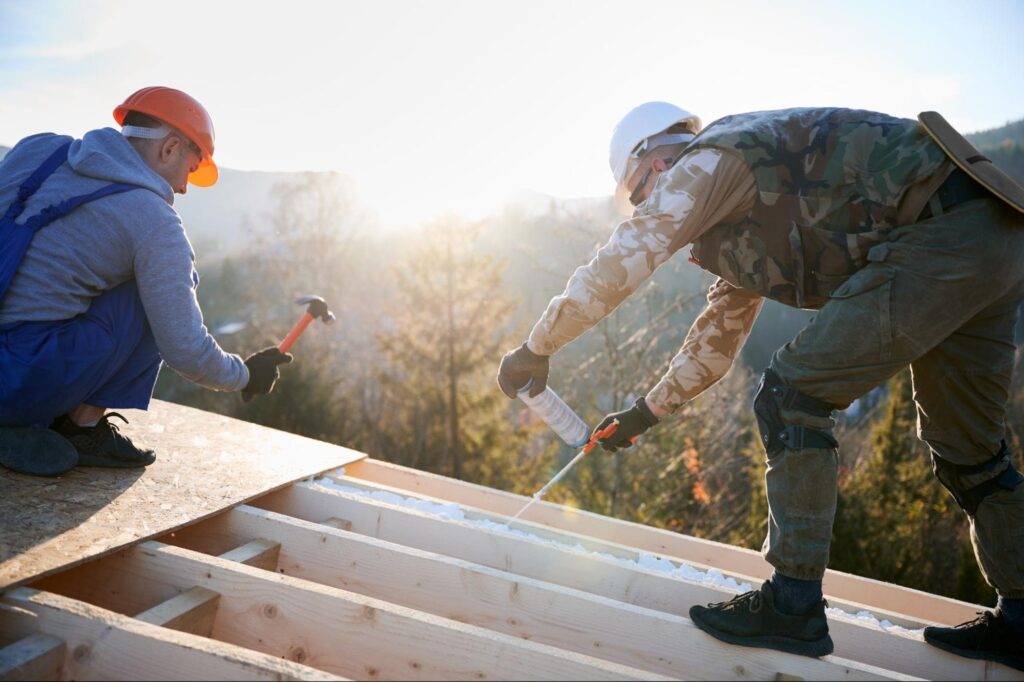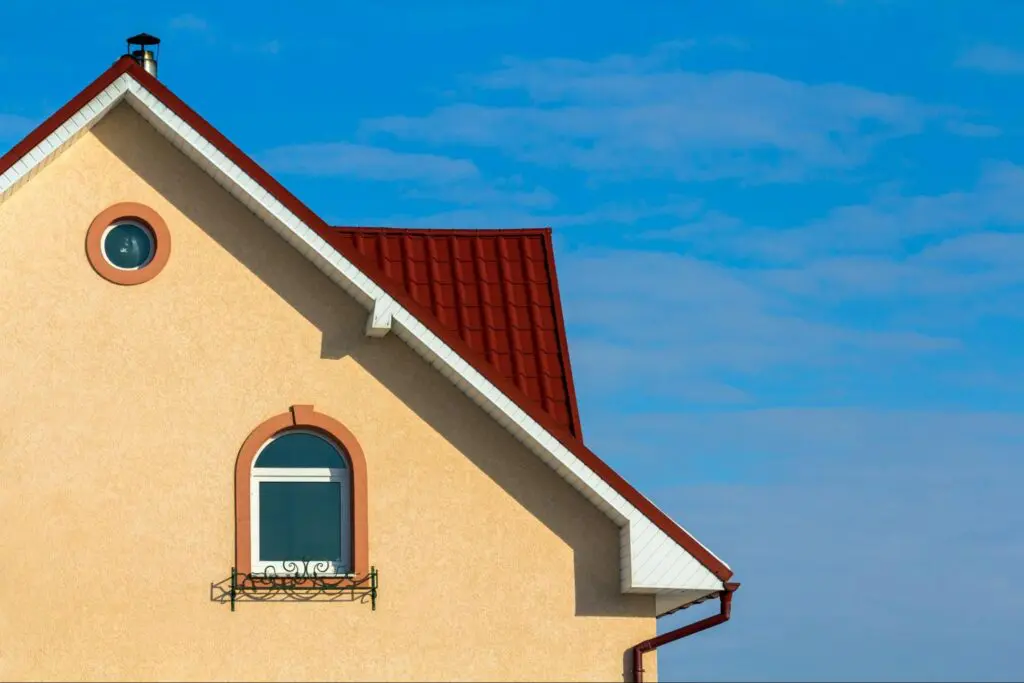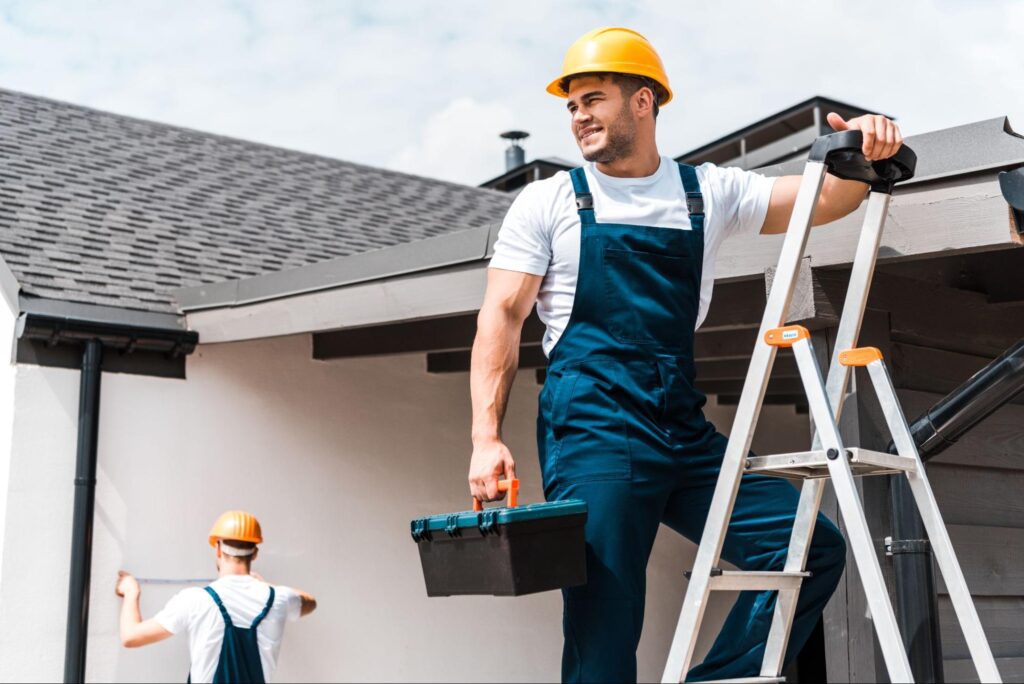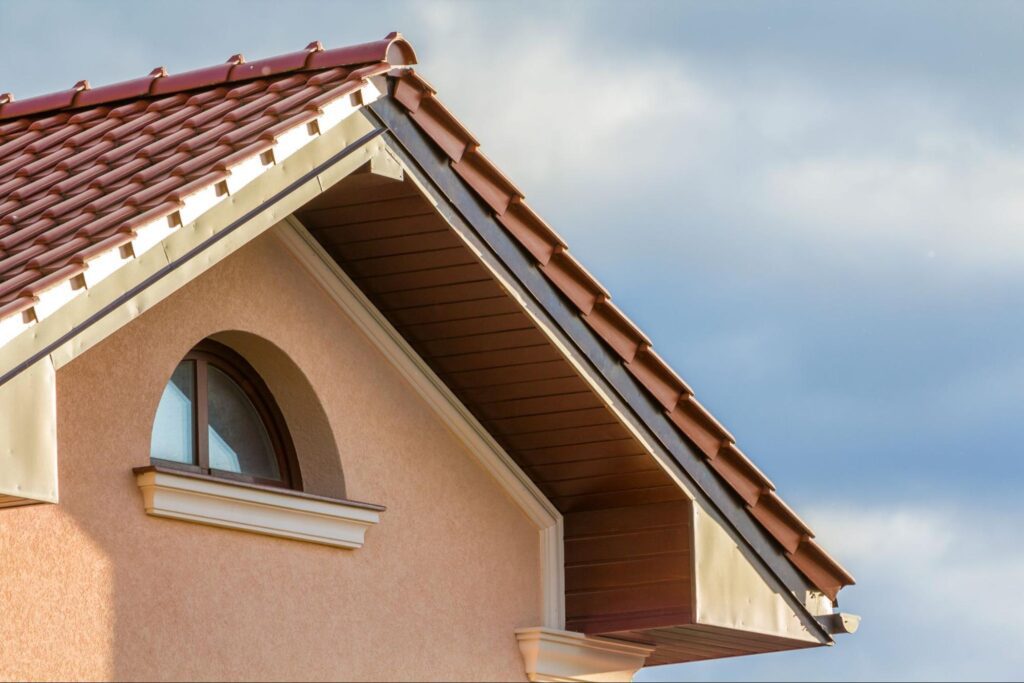Roofs don’t last forever, but the right roofing services can help them stay in good shape for years. A roof’s lifespan depends on its material, local weather conditions, and how well it’s maintained. A well-installed roof can last for decades, while one with poor upkeep might need repairs or replacement much sooner. Regular inspections, timely maintenance, and professional roofing services keep roofs sturdy and protect homes from costly damage. Signs Roofs Are Nearing the End of Their Lifespan Roofs don’t fail overnight, but signs reveal when they are past their prime. If ignored, minor problems lead to major issues requiring costly repairs or a full replacement. Catching early warning signs helps homeowners address damage before it worsens. Knowing what to look for prevents unexpected leaks, structural problems, and expensive fixes: Leaks and Water Damage Appear Indoors Water stains on ceilings or walls indicate a failing roof. Small leaks worsen over time, leading to mold growth and structural damage. A roof that allows water inside needs immediate attention before costly repairs pile up. Cracked, or Missing Shingles Show Aging Shingles that curl, crack, or fall off signal that the roof is nearing its lifespan. Constant exposure to sun, rain, and wind weakens materials, making them brittle. A roof with widespread shingle damage struggles to protect the home from the elements. Sagging Roof Sections Indicate Structural Issues A roof that sags in certain spots suggests serious structural problems. Water damage, weakened supports, or deteriorated decking cause sections to sink. Delaying repairs risks complete roof failure and more expensive restoration work. Granules Collect in Gutters Asphalt shingles shed granules as they age, and excessive granule loss shortens their lifespan. Granules protect shingles from UV rays and harsh weather, so losing them leads to faster wear. Checking gutters for buildup helps determine if the roof is wearing out. Rising Energy Bills Suggest Poor Insulation A roof in poor condition allows air to escape, forcing heating and cooling systems to work harder. Damaged shingles, inadequate ventilation, and leaks contribute to energy loss. Higher utility bills often indicate an aging roof that no longer insulates appropriately. Factors That Affect How Long Roofs Last A roof’s lifespan isn’t just about its material. Factors affecting durability may include installation, quality of materials, climate, and maintenance. Regular inspections and timely repairs prevent minor issues from turning into major problems. Knowing what affects a roof’s durability helps homeowners make choices that extend its life and avoid costly replacements: Material Selection Different roofing materials offer varying levels of durability and resistance to the elements. Asphalt shingles last around 20 to 30 years, while metal and tile roofs can exceed 50 years with proper care. Choosing a high-quality material suited for the local climate improves long-term performance. Budget-friendly options may save money upfront but often require more frequent repairs or replacements. Weather and Climate Conditions Extreme temperatures, heavy rainfall, and strong winds accelerate roof wear and tear. Frequent exposure to snow and ice can lead to moisture buildup, causing leaks and structural damage. Hot and sunny climates weaken roofing materials over time, making them brittle and prone to cracks. Storms with high winds and flying debris also contribute to early roof deterioration. Improper Installation Even the best roofing materials fail earlier if installed incorrectly. Poor workmanship leads to gaps, weak seams, and inadequate ventilation, which cause leaks and structural issues. Hiring experienced roofing professionals ensures correct installation, improving roof longevity. Choosing reputable contractors reduces the risk of costly repairs due to installation errors. Maintenance and Repairs Regular roof inspections help catch minor problems before they turn into significant damage. Cleaning gutters, replacing damaged shingles, and sealing leaks keep the roof in good condition. Ignoring small issues like cracked shingles or minor leaks spreads water damage, weakening the structure. A well-maintained roof lasts longer and performs better in all weather conditions. Ventilation and Insulation Poor ventilation leads to trapped heat and moisture, which weaken roofing materials over time. Insufficient insulation allows temperature fluctuations that cause shingles to expand and contract, leading to cracks. Proper airflow reduces moisture buildup in the attic, preventing mold growth and wood rot. Good ventilation and insulation help roofs last longer and reduce energy costs. How Long Do Roofs Last Based on Their Material? Roofing varies on the durability of the materials. Choosing the right material helps homeowners reduce long-term costs and maintenance issues. Some options require frequent upkeep, while others remain sturdy with minimal repairs. Understanding how long each type lasts makes it easier to plan for future replacements: Asphalt Shingle Roofs Last 20 to 30 Years Asphalt shingles remain a common choice due to their affordability and easy installation. Three-tab shingles typically last around 20 years, while architectural shingles can reach 30 years with proper care. Regular maintenance, such as replacing damaged shingles and cleaning gutters, prevents early deterioration. Extreme weather conditions, including heavy storms and intense sunlight, often shorten the lifespan of asphalt roofs. Metal Roofs Last 40 to 70 Years Metal roofing provides long-term durability and resistance against harsh weather. Aluminum and galvanized steel typically last 40 to 50 years, while copper and zinc can exceed 70 years. Protective coatings and proper installation help prevent rust and corrosion, keeping the roof in good condition. Fewer repairs and a longer lifespan offset higher upfront costs than other materials. Tile Roofs Last 50 to 100 Years Clay and concrete tiles offer excellent longevity and can withstand extreme weather. Most tile roofs last at least 50 years, with some exceeding 100 years when properly maintained. Regular inspections help prevent cracks and leaks, especially in areas with freeze-thaw cycles. Due to their weight, tile roofs require strong structural support to avoid long-term damage. Wood Shake Roofs Last 30 to 50 Years Cedar and other wood shakes provide a natural look but require consistent upkeep. A well-maintained wood shake roof lasts between 30 and 50 years, depending on climate and treatment. Routine sealing and pest control help prevent decay, mold, and insect damage. Moisture buildup and fire risks make…
Read MoreRoofing Services
Top Five Roofing Materials for Homeowners
Your roof is one of the most crucial parts of your home. It shields you from the elements while contributing to your home’s overall style and value. Choosing the right roofing material can feel overwhelming with so many options available. Knowing the strengths and weaknesses of each option helps you make the best decision for your home and budget. Exploring the Top Five Roofing Materials for Your Home The type of roof you choose impacts your home’s protection, energy efficiency, and appearance. With numerous options available, finding the perfect fit can be challenging. Understanding the features of top roofing materials simplifies the decision and ensures lasting value for your home. 1. Asphalt Shingles: The Popular Choice in Roofing Materials Asphalt shingles dominate the residential roofing market for good reason. Their affordability, ease of installation, and versatility appeal to homeowners across various regions. While not as durable as other materials, they remain a reliable and attractive choice for many. Benefits of Asphalt Shingles Asphalt shingles are one of the most budget-friendly roofing options available. They come in various colors, textures, and styles to suit any home design. Their lightweight nature simplifies roof installation, reducing labor costs. Maintenance and repairs are also easy, making them a practical choice for cost-conscious homeowners. Drawbacks of Asphalt Shingles The main drawback of asphalt shingles is their shorter lifespan, typically 20 to 30 years. They can become damaged in extreme weather conditions, such as hailstorms or high winds. In humid or wet climates, mold and algae growth can be an issue, requiring additional treatments. Over time, their aesthetic appeal can fade, necessitating replacement sooner than with other materials. 2. Metal Roofing Materials: Durability Meets Modern Style Metal roofs have gained popularity for their longevity and energy efficiency. Available in various finishes and colors, they offer a sleek, modern appearance that complements multiple architectural styles. Their ability to withstand harsh weather makes them a favorite in regions prone to storms or extreme temperatures. Advantages of Metal Roofing Metal roofs are incredibly durable, with lifespans often exceeding 50 years. They effectively reflect sunlight, reducing heat absorption and lowering cooling costs. Maintenance is minimal, as metal resists cracking, shrinking, and erosion. Its lightweight structure makes it easy to install without requiring structural reinforcements. Disadvantages of Metal Roofing One of the most significant disadvantages is the high upfront cost, which may deter some homeowners. Metal roofs can produce more noise during heavy rain or hail than other materials. While they are strong, impacts from falling objects can sometimes cause dents. Homeowners must also ensure proper installation to avoid leaks and maximize longevity. 3. Clay Tiles: Traditional Elegance in Roofing Materials Clay tiles have been a favorite roofing choice for centuries, offering beauty and functionality. Their earthy tones and distinctive design are often associated with Mediterranean and Spanish-style homes. Beyond aesthetics, clay tiles stand out for their durability and resistance to fire. Strengths of Clay Tiles Clay tiles are among the most visually appealing roofing materials with natural tones and textures. They are non-combustible, offering excellent fire resistance for added safety. With proper care, clay tiles can last 50 years or more, making them a long-term investment. Additionally, they are made from natural materials, making them environmentally friendly and recyclable. Weaknesses of Clay Tiles The weight of clay tiles is a significant drawback, often requiring reinforced support structures. They are one of the most expensive roofing options for materials and installation. The complex installation process requires skilled professionals, adding to the overall cost. Lastly, clay tiles can be brittle and may crack if heavy objects fall on them. 4. Slate Roofing Materials: The Epitome of Longevity For homeowners seeking unmatched durability and sophistication, slate is a standout option. This natural stone roofing material boasts an incredible lifespan and a timeless aesthetic. It is a top choice for those who invest in quality and beauty. Perks of Slate Roofing Slate roofs can last over 100 years, making them one of the most durable options. Their natural stone composition gives them a unique, elegant appearance that enhances any home. Slate is highly resistant to fire, water, and extreme weather, providing reliable protection. Its eco-friendliness is another bonus, as the material is natural and recyclable. Downsides of Slate Roofing Despite its benefits, slate is among the most expensive roofing materials to purchase and install. It is also cumbersome, necessitating strong structural support. The material is brittle and can crack under heavy impact or during improper installation. Repairing or replacing damaged tiles requires expert knowledge, which can drive up costs. 5. Wood Shingles and Shakes: Rustic Charm in Roofing Materials Wood shingles and shakes bring warmth and natural beauty to homes. They are particularly popular for cottages, rustic homes, and properties with eco-conscious designs. While they require maintenance, their unique appearance makes them worth considering for many homeowners. Why Choose Wood Shingles and Shakes Wood roofing materials offer unmatched rustic charm and aesthetic appeal. They are made from renewable resources, making them an eco-friendly choice. Wood shingles and shakes provide natural insulation, improving energy efficiency in hot and cold climates. Their textured look creates a unique style that enhances the home’s character. Challenges With Wood Roofing Wood shingles and shakes are high-maintenance, requiring regular cleaning and sealing to prevent damage. They are highly flammable without proper treatment, though fire-resistant coatings can mitigate this risk. These roofs are also prone to damage from pests, such as termites, and may decay in wet conditions. Over time, repairs and maintenance can add up, making them a costlier choice in the long run. Cost Comparison of Roofing Materials Asphalt shingles are the most budget-friendly choice, ranging from $2.50 to $5.50 per square foot. They offer a cost-effective solution for homeowners seeking a functional yet economical roofing material. Mid-Range Roofing Costs Wood shingles and shakes fall in the middle price range, costing between $6.00 and $9.00 per square foot. Metal roofing is slightly more expensive, ranging from $6.00 to $12.00 per square foot, but its durability and energy efficiency…
Read MoreMost Common Roof Repair Services for Property Owners
Roofs face various challenges over time, from weather-related wear to aging materials. As a result, property owners often need roof repair services to address common issues that can affect the roof’s performance. These services help to keep the roof in good condition and prevent more extensive damage. Prompt repairs ensure the roof protects the property and avoids costly future repairs. Why Knowing Common Roof Repair Services Matters A roof is a significant investment; it can experience wear and tear over time. Familiarity with common roof repair services helps property owners address issues before they escalate, preserving the roof’s integrity and the property’s overall value. Roof repairs are not always straightforward, and knowing the types of services available ensures that property owners make informed decisions when problems arise. Familiarizing these common roof repairs allows quicker responses, preventing costly and unnecessary damage: Early Detection Prevents Major Damage Addressing roof problems as they arise regularly can help avoid more significant issues. Small leaks, cracked shingles, or deteriorating flashing can often be fixed with minor repairs, preventing the need for expensive replacements later. By addressing these issues early, property owners can avoid further damage to the home’s interior, including mold growth and structural decay. Timely repairs preserve the roof’s functionality and minimize the overall repair costs. Improved Roof Longevity Roof repairs are crucial to maintaining the roof’s lifespan. A well-maintained roof can last much longer than a neglected one, reducing the frequency and cost of replacement. By knowing the common roof repair services, property owners can ensure that necessary repairs are made before minor issues become large. This helps maintain the roof’s durability, preventing premature wear and extending its useful life. Cost-Effective Solution Familiarity with roof repair services allows property owners to make more informed decisions about the best solutions for their roof’s needs. By addressing repairs promptly and accurately, property owners can prevent further damage that might lead to more costly repairs. Investing in routine roof inspections and minor repairs can save money in the long term by avoiding extensive and expensive roof replacements. Enhances Property Value A well-maintained roof protects the property and contributes to its overall value. Potential buyers are more likely to be attracted to a home with a well-kept roof, knowing they won’t have to invest in costly repairs after moving in. Regular roof maintenance and timely repairs can increase a property’s curb appeal and market value. Knowing what roof repair services are needed helps keep the roof in top shape, ensuring the property retains its value over time. The Most Common Roof Repair Services You Should Know Familiarity with the most common roof repair services ensures property owners can quickly identify issues and seek solutions. Keeping the roof in good condition helps prevent costly damage and extends its lifespan. Here are the most common roof repair services every property owner should know about: Leak Repairs Leaks are among the most frequent issues requiring roofing services. They can occur due to damaged shingles, broken flashing, or gaps around roof penetrations. When left untreated, leaks lead to water damage inside the home, affecting ceilings, walls, and even the foundation. Repairing leaks usually involves identifying the source and sealing the affected area. A professional roof repair service can quickly pinpoint the leak and provide an effective solution to prevent further water infiltration. Shingle Replacement Shingles can suffer damage over time due to weather conditions or physical impact. Missing, cracked, or curled shingles expose the roof to water damage and potential leaks. Shingle replacement services involve removing damaged shingles and installing new ones to restore the roof’s integrity. The process can be as simple as replacing a few shingles or more extensive if a larger portion of the roof is affected. Properly replaced shingles help protect the underlying layers and keep the roof functioning as it should. Flashing Repairs Flashing seals the joints and seams in the roof, such as around chimneys, vents, and skylights, preventing water from seeping into the structure. Over time, flashing can become damaged or corroded, leading to leaks and water damage. Flashing repair services focus on replacing or resealing the flashing to maintain a watertight seal. A professional roofer can inspect the flashing and identify areas that need attention, ensuring that water cannot penetrate these vulnerable spots. Timely flashing repairs prevent further complications and protect the roof from moisture damage. Gutter Cleaning and Maintenance Clogged or damaged gutters can cause water to back onto the roof, leading to leaks and deterioration of roofing materials. Gutter cleaning involves removing debris such as leaves, twigs, and dirt to allow water to flow freely through the system. Regular maintenance services include inspecting the gutters for damage, securing loose sections, and ensuring proper drainage. Clean gutters help prevent water damage to the roof and the home’s foundation. Gutter maintenance should be part of an ongoing roofing service to keep everything functioning properly. Roof Inspections Regular roof inspections are key to catching potential issues before they become serious problems. Professional roofers will check for signs of damage, such as cracked shingles, clogged gutters, or worn-out flashing. Inspections help identify areas that need repair and allow property owners to take action before damage spreads. A thorough roof inspection typically includes an assessment of the roof’s overall condition, ensuring that all components work together to protect the property. This proactive service is essential for maintaining the roof’s performance and longevity. Ventilation Repairs Proper ventilation is crucial for the health of the roof and the home’s interior. Without adequate airflow, moisture can build up in the attic, leading to mold growth, rot, and insulation damage. Ventilation repair services ensure vents and fans are working properly, helping regulate temperature and humidity levels inside the home. Replacing damaged or malfunctioning vents can improve air circulation and prevent long-term issues. Keeping ventilation systems in good condition helps maintain the roof’s overall health. Roof Coating and Waterproofing Roof coatings protect the roof’s surface from the elements, including rain, UV rays, and extreme temperatures. These coatings help extend the…
Read MoreHow to Choose the Best Types of Roofs for Your Home
Every home deserves a roof that combines durability, efficiency, and style. Today’s roofing materials range from classic asphalt shingles to sophisticated metal or slate options, each offering distinct features. Choosing the right type requires careful consideration of climate, architectural style, and budget. Proper planning and support from roofing services make selecting roofs that enhance your home’s overall value and functionality possible. Why Understanding the Different Types of Roofs Matters The variety of roofing options available today offers homeowners endless possibilities. Each type of roof comes with distinct characteristics, from durability and energy efficiency to cost and maintenance needs. A deeper understanding of the available options ensures you select a roof that aligns with your home’s needs and withstands environmental challenges. Learning about different roofing materials and styles can help you avoid costly mistakes and make an informed investment that adds long-term value to your property. Durability Varies Between Materials Different roofing materials offer varying levels of durability, which impacts how long they can protect your home. Metal roofs and slate tiles often last 50 years or more, while asphalt shingles typically last between 20 and 30 years. Understanding each material’s lifespan helps you decide to minimize repair and replacement costs over time. A highly durable roof ensures your home remains secure against weather and wear. Roof Design Affects Energy Efficiency The type of roof you choose can significantly influence how efficiently your home uses energy. Reflective materials like metal or light-colored shingles deflect heat, keeping homes cooler in warmer climates. Other options, such as composite shingles or slate, offer insulation that retains heat during colder months. Learning which materials enhance energy efficiency can reduce utility bills and create a more comfortable living space. Roof Style Impacts Visual Appeal The roof is a key feature of your home’s exterior, playing a major role in its overall appearance. A slate roof creates an elegant, timeless look, while wood shingles bring a rustic charm to traditional homes. Modern designs pair well with sleek metal roofing, offering a contemporary aesthetic. Exploring various materials and styles ensures a cohesive design that enhances curb appeal and boosts your home’s value. Budget Planning Requires Material Knowledge Understanding the cost of different roofing materials allows you to plan a budget that meets your financial goals. Affordable options like asphalt shingles provide flexibility, while premium materials like slate or tile require a higher upfront investment. Comparing costs with benefits, such as longevity and maintenance, ensures your budget covers long-term savings. Knowledge about materials prevents unexpected expenses and helps you stay within your financial plan. The Different Types of Roofs A roof must complement your home’s design, withstand environmental factors, and fit within your budget. Knowing the available options and their features makes it easier to select the ideal roof that aligns with your specific needs. Some popular roofing options are suited to different styles and climates: Asphalt Shingles Asphalt shingles are one of the most widely used roofing materials due to their affordability and versatility. They are available in various colors and textures, making them suitable for different architectural styles. Asphalt shingles provide good durability and are relatively easy to install, making them a popular choice for residential homes. While they offer a lower lifespan than other materials, they are cost-effective and easy to replace. Metal Roofs Metal roofs are known for their durability and resistance to extreme weather conditions. They are lightweight, environmentally friendly, and available in various styles that mimic wood, slate, or tile. Metal roofing offers excellent energy efficiency by reflecting heat, making it ideal for warmer climates. Although the initial cost can be higher, their longevity and minimal maintenance requirements make them a worthwhile investment. Slate Roofs Slate roofs are renowned for their timeless beauty and incredible durability, often lasting over a century with proper care. They offer a sophisticated appearance that enhances the value of any property, mainly traditional or upscale homes. Slate is fire-resistant and can withstand harsh weather, making it a practical and stylish choice. However, the material is heavy and requires professional installation, which can increase the overall cost. Tile Roofs Tile roofs are a classic option, often seen in Mediterranean or Spanish-style homes, providing a distinctive and elegant look. Made from clay or concrete, tiles are highly durable and resistant to fire, rot, and insect damage. Their heavy weight ensures stability but may require additional structural support during installation. Tile roofs also offer excellent thermal insulation, helping maintain a comfortable indoor temperature year-round. Wood Shingles and Shakes Wood shingles and shakes add natural charm and rustic appeal to traditional and cottage-style homes. They are typically made from cedar, redwood, or other durable woods, offering good insulation properties. Hand-split shakes have a rougher texture, while shingles are machine-cut for a more uniform appearance. Regular maintenance is required to prevent rot and insect damage, but their aesthetic appeal makes them a popular choice for many homeowners. Flat Roofs Flat roofs are commonly used in modern or minimalist designs, providing a sleek and streamlined appearance. They are typically constructed using rubber, PVC, or modified bitumen, offering cost-effective installation and maintenance. Flat roofs are often used for outdoor spaces like rooftop gardens or patios, adding functionality to the design. While they require regular maintenance to prevent water pooling, they are an excellent option for contemporary homes. Green Roofs Green or living roofs incorporate vegetation layers that provide insulation and improve air quality. They are eco-friendly, helping reduce the heat island effect in urban areas and lowering energy costs. Green roofs also manage rainwater runoff efficiently, contributing to better drainage systems. While the upfront cost and maintenance may be higher, their environmental and aesthetic benefits make them a growing trend in sustainable home design. Tips for Choosing the Best Types of Roofs for Your Home Selecting the perfect roof involves more than choosing a material that looks good. The right roof should align with your home’s architecture, stand up to local weather, and fit within your budget. Each material and design offers unique features,…
Read More




